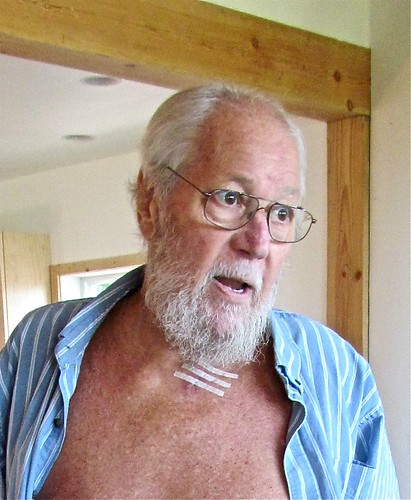Lund Farm Day Camp: An Article in the Lund Barnacle
Wednesday, October 15th, 2014http://www.lundcommunity.ca/ESW/Files/Fall_2014-_online.pdf
Lund Farm Day Camp operated for three two-week sessions during the summers of 1973 and 1974. 25 to 35 kids in grades 1 through 8 from all over the district attended each session. The camp was headquartered at the old homestead on the Lund Highway owned today by Ed and Maggie Bereziak and at the time by Steven and Janet Marx, and previously by the Bleiler, Larson and Carlson families. Its original hand-adzed vertical cedar walls housed the cookshack for a logging camp in the 1890’s.
The camp’s activities included caring for a herd of goats, 35 chickens, a pair of ducks, two sheep, six rabbits, and a pig named Snorky Porker. Children also tended, harvested and preserved vegetables from a large garden and fruit from the ancient orchard, baked pies in the outdoor woodstove, built cedar-stave fences, sheared, washed, carded, spun and crocheted sheep’s wool, and dammed up the stream for a swimming hole. Recreational activities included a morning singsong, capture-the-flag in the pasture, writing and performing plays, swinging on a huge zunga and in a gillnet hammock, along with hiking and swimming.
Each day concluded with a gathering at which the children contributed reports recorded in a daily log. A sample: “We played on the big Zunga. Worked on the dam. Found a frog and three water snakes. Peter came and cut hay. Fred came to take pictures. One chicken got away and we caught it again. Chased Laurie and Steven with hoops. Mulched lettuce and corn. Cleaned up cubbies. Fed ducks. Baby goats nursed off Mama. Michael and Val clipped chicken wing. Flag making. Played drama games. Made birthday cake in Joanne’s loft. Waded in pool. Joanne drove Kent to hospital. Went to beach. Drank out of stream. Ken and Pauline learned to swim. Steven took a group to climb mountain.”
The camp’s emphasis was on teaching some of the skills required to live in the bush in an earlier era. According to an article in the Powell River News of July 16, 1973, “The first batch of children at the camp have almost completed a scale-model of nearby Craig farm. They were taken on a tour of the farm by its owner, learned its history and are now reconstructing the site¦”
Families paid $10 per child per session. During the first year students were brought to camp by carpool. The second year’s budget included a bus and driver for daily pickup and delivery. Each week included a one-night sleep-over, either on the farm or on Savary Island, transportation provided by local tugs and fishboats.
The original idea for the Camp was dreamed up by Janet and Steven in early January 1973, when their unemployment insurance ran out. It started to materialize as a result of brainstorming and collaboration with Kenneth Law, who settled on the farm in mid-February. It was funded by Opportunities For Youth, a federal program encouraging local community development.
In addition to the organizers, the Camp offered ten weeks of gainful employment to Gerry Karagianis, Laurie Derton, Joanne Power, Elaine Sorenson, Anne Wheeler, Pam Huber, Randy Mann, Mike Nelson, Rob Dramer, David Creek, Gae Holtby and Janet McGuinty. It was supported by the Powell River School District, the Sliammon Band and many community volunteers.

